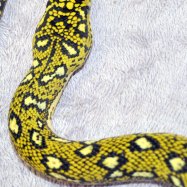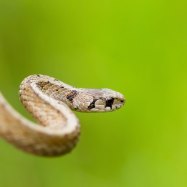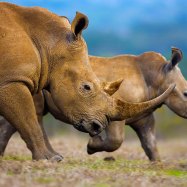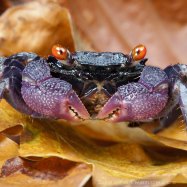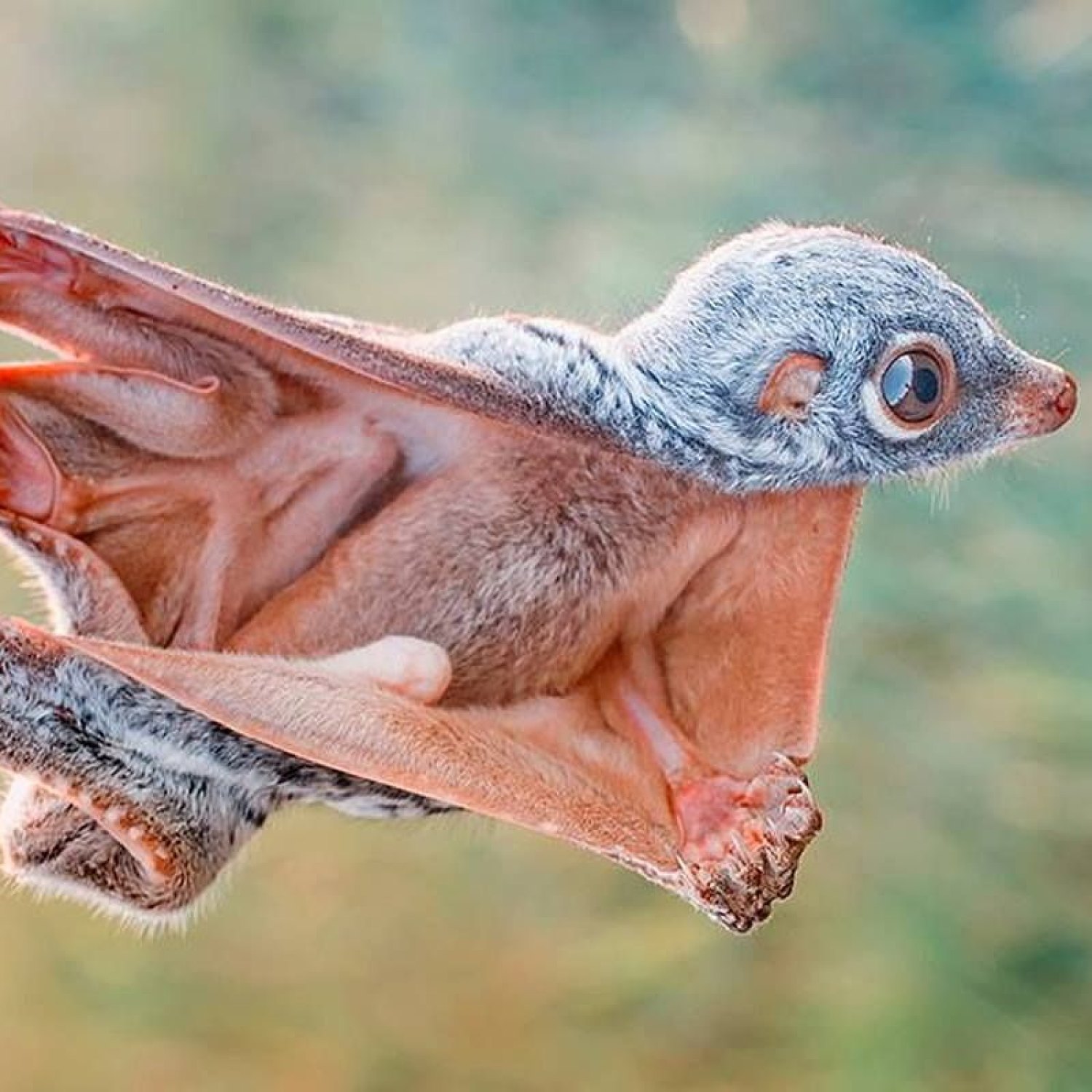
Flying Lemur
35 to 40 cm
The flying lemur, also known as the colugo, is a fascinating animal found in the forest canopies of Southeast Asia. With a slender and elongated body shape, these animals belong to the family Cynocephalidae and can grow up to 35 to 40 cm in length. Despite their name, they don't actually fly but instead glide through the air using a specialized membrane. #fascinatingfacts #furryfriends #wildlife
Animal Details Summary:
Common Name: Flying Lemur
Kingdom: Animalia
Habitat: Tropical rainforests
The Fascinating Flying Lemur: A True Miracle of Nature
The animal kingdom is filled with remarkable creatures, each with its unique set of characteristics and abilities. In the realm of mammals, one particular species stands out for its incredible aerial abilities – the Flying Lemur, also known as Cynocephalus variegatus.This magnificent creature, with its distinct brownish-gray coloration and slender elongated body, belongs to the order of Dermoptera, which translates to "skin-winged" in Greek – a reference to its unique flying membrane. Found in the tropical rainforests of Southeast Asia, the Flying Lemur has captured the imagination of humans for centuries Flying Lemur. In this article, we will take a closer look at this fascinating animal and uncover its extraordinary features.
A Closer Look at the Flying Lemur's Taxonomy
Before we delve into the wondrous capabilities of the Flying Lemur, let's take a moment to understand its taxonomy. As a member of the Animalia kingdom, it shares similarities with other mammals, such as possessing a backbone and producing milk to feed its young. Within the kingdom, the Flying Lemur belongs to the Chordata phylum, which includes animals that have a notochord at some stage in their lives.Furthermore, it belongs to the Mammalia class, which is made up of warm-blooded vertebrates that have fur or hair and feed their young with milk. What sets the Flying Lemur apart is its order – Dermoptera – which includes only two known species, both of which are Flying Lemurs. This makes them a very rare and unique animal.
In terms of family, the Flying Lemur belongs to the Cynocephalidae family, which is made up of lemur-like creatures that are found in the Asian continent. It is interesting to note that despite its name, the Flying Lemur is not actually a lemur, nor does it possess the ability to fly like a bird Fox. Its flying ability is a result of its unique adaptation, which we will explore in more detail later on.
A Habitat High Up in the Canopies
The Flying Lemur is primarily found in the dense tropical rainforests of Southeast Asia, specifically in countries like Indonesia, Malaysia, and the Philippines. Its natural habitat is the forest canopy, where it spends most of its life. The dense vegetation provides the perfect environment for the Flying Lemur to glide, forage, and shelter.Within the canopy, the Flying Lemur uses its long, curved claws to cling onto trees and navigate through the branches. These sharp claws are crucial for their survival as they spend most of their time in the air. Not only do they use them for gliding, but they also use them to climb and grip onto tree bark.
A Herbivorous Diet for a Gentle Creature
Despite its sharp claws and gliding abilities, the Flying Lemur feeds on a herbivorous diet, consisting primarily of leaves, bark, flowers, and fruits. As they prefer to spend most of their time in trees, they have developed a keen sense of smell to detect ripened fruits and other food sources.To reach their food, they use their agile claws to reach for leaves and fruits while clinging onto the trees. This solitary animal is an essential part of the rainforest ecosystem, as it helps in pollination and seed dispersal.
The Amazing Gliding Abilities
One look at the Flying Lemur, and it is evident why it has captured the attention of humans for centuries. Its most striking feature is its ability to glide between trees, covering a distance of up to 100 meters in a single glide. This is thanks to its unique skin membrane, which connects its limbs from its head to its tail.When fully outstretched, this membrane resembles the shape of a parachute, allowing the Flying Lemur to glide smoothly and effortlessly through the air. What's more remarkable is that this membrane provides great control and steering abilities, enabling the Flying Lemur to make mid-air changes in direction with ease.
But how does this adaptation work? The Flying Lemur takes advantage of gravity and creates lift by gliding down from one tree to another. As it glides, its body is parallel to the ground, helping it maintain good balance. Its elongated body also acts as a stabilizer, reducing air resistance and increasing its gliding distance.
The Miracle of Reproduction and Family Life
Like other mammals, the Flying Lemur also reproduces sexually and gives birth to live young. What's unique is that the female Flying Lemur's reproductive system is only receptive to fertilization for a short period during the year, making successful reproduction a rare occurrence.Once pregnant, the female gives birth to a single offspring, which she raises and cares for in a single parent-family structure. The mother carries her young in a pouch and takes care of it for about two months until it is ready to venture out on its own.
Threats to the Survival of the Flying Lemur
Despite its remarkable adaptations, the Flying Lemur faces several threats to its survival. Habitat loss and deforestation due to human activities are the most significant threats to this species, as they rely heavily on rainforest canopies for food, shelter, and reproduction.This loss of habitat also puts pressure on their food sources, making it difficult for them to find enough food to sustain their population. Another threat the Flying Lemur faces is hunting for its fur and meat, as it is seen as a delicacy in some parts of Southeast Asia. Conservation efforts are crucial in protecting these creatures and ensuring their survival.
The Significance of the Flying Lemur to NLP Research
NLP research, a branch of artificial intelligence, focuses on understanding human language and developing computer programs that can process and understand it. One of the significant challenges in this field is the ambiguity and complexity of human language, leading to difficulties in comprehension and translation.What makes the Flying Lemur especially intriguing to NLP researchers is its distinct call, which is similar to a chirping sound. Despite its simple structure, it is used to communicate different messages, such as warning calls or calls for mating.
By studying the Flying Lemur's calls and analyzing the context in which they are used, NLP researchers can gain a better understanding of the complexity and nuances of communication – a crucial step in developing more advanced language processing programs.
In Conclusion
In the animal kingdom, there are countless remarkable creatures, each with its unique set of adaptations and abilities. The Flying Lemur, with its incredible gliding abilities and solitary nature, is undoubtedly a true miracle of nature.Found in the tropical rainforests of Southeast Asia, this magnificent creature faces several threats to its survival, making conservation efforts crucial in protecting its population. As we continue to unravel the mysteries of the natural world, the Flying Lemur remains a fascinating subject for study, not only for its aerial capabilities but also for its significance in NLP research.

Flying Lemur
Animal Details Flying Lemur - Scientific Name: Cynocephalus variegatus
- Category: Animals F
- Scientific Name: Cynocephalus variegatus
- Common Name: Flying Lemur
- Kingdom: Animalia
- Phylum: Chordata
- Class: Mammalia
- Order: Dermoptera
- Family: Cynocephalidae
- Habitat: Tropical rainforests
- Feeding Method: Herbivorous
- Geographical Distribution: Southeast Asia
- Country of Origin: Indonesia, Malaysia, Philippines
- Location: Forest canopies
- Animal Coloration: Brownish-gray
- Body Shape: Slender and elongated
- Length: 35 to 40 cm
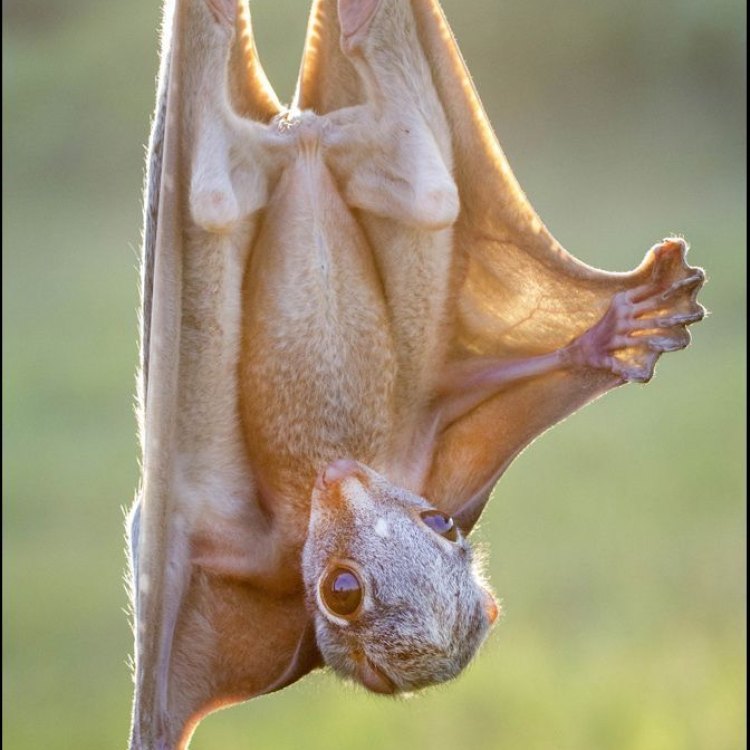
Flying Lemur
- Adult Size: Medium-sized
- Average Lifespan: 10 to 15 years
- Reproduction: Viviparous
- Reproductive Behavior: Monogamous
- Sound or Call: No distinctive vocalizations
- Migration Pattern: Non-migratory
- Social Groups: Solitary or small groups
- Behavior: Nocturnal and arboreal
- Threats: Habitat loss and fragmentation
- Conservation Status: Vulnerable
- Impact on Ecosystem: Seed dispersal
- Human Use: None
- Distinctive Features: Patagium (gliding membrane)
- Interesting Facts: Despite their name, flying lemurs are not true lemurs and do not fly like birds or bats.
- Predator: Large birds of prey, snakes, and arboreal mammals
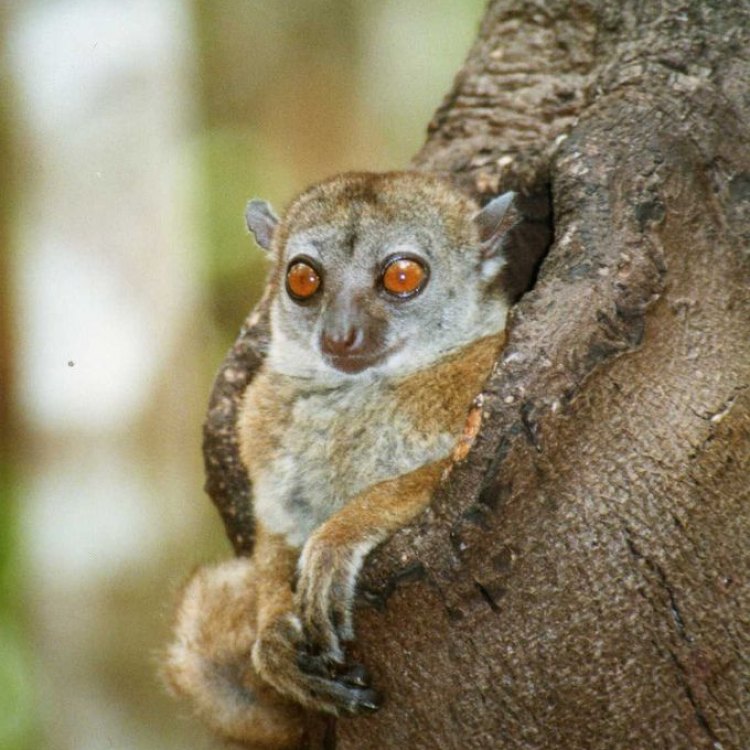
Cynocephalus variegatus
The Fascinating Flying Lemur: An Arboreal Marvel
In the dense jungles of Southeast Asia, there is a remarkable creature that seems to defy the laws of physics. It glides through the air with grace and agility, despite having no wings. Its large, glider-like membrane allows it to effortlessly move through the treetops with ease. This animal is none other than the Flying Lemur PeaceOfAnimals.Com.However, despite its name, the Flying Lemur is not a lemur at all. In fact, it is not even closely related to lemurs. This enigmatic animal belongs to a unique and distinctive order called Dermoptera, which translates to "skin-winged" in Greek.
The Flying Lemur is classified as a medium-sized animal, with an average body length of around 35-40 centimeters. Its striking feature is its patagium, a membrane that extends from its neck to its wrists and ankles. This membrane allows the Flying Lemur to glide through the air, giving the appearance of flying.
Average Lifespan and Reproduction Behavior
The Flying Lemur has an average lifespan of 10 to 15 years in the wild. However, in captivity, they may live up to 20 years.One of the most intriguing aspects of the Flying Lemur's reproductive behavior is its viviparous nature, meaning it gives birth to live young Fleckvieh Cattle. Females have a gestation period of about 60-90 days, after which they give birth to one offspring at a time. Interestingly, the young are born with a fully developed patagium and can glide as soon as they start to explore their surroundings.
A Monogamous Species
The Flying Lemur is a monogamous species, which means they form lifelong bonds with one partner. They are often seen grooming and cuddling with their mate. This behavior is believed to strengthen their bond and maintain a stable social structure.However, some individuals may also engage in polygamous behavior, where males may mate with multiple females. The reason for this variation in behavior is not fully understood, but it may have to do with the availability of food and resources.
Migratory and Social Patterns
Unlike many other animals, the Flying Lemur is non-migratory. They tend to stay in one location throughout the year, unlike birds or some mammals that migrate to find food or breeding grounds.These creatures are primarily solitary and only come together during breeding season or to form small social groups. The size of these groups may vary, but they typically consist of only a few individuals.
Nocturnal and Arboreal Behavior
The Flying Lemur's unique physical features, such as its patagium, make it a highly specialized arboreal animal. It spends most of its time in the treetops, gliding from tree to tree in search of food and shelter.These creatures are strictly nocturnal, meaning they are most active at night. This behavior helps them avoid predators and allows them to take advantage of the cooler temperatures in the dark.
Threats to the Flying Lemur and Conservation Status
Unfortunately, like many other species, the Flying Lemur is facing significant threats in its natural habitat. Habitat loss and fragmentation, primarily due to deforestation, pose the most significant threat to this species.The destruction of their homes, along with the loss of food sources, has caused a decline in the Flying Lemur population. As a result, they are currently listed as vulnerable on the International Union for Conservation of Nature (IUCN) Red List.
The Impact of Flying Lemurs on the Ecosystem
Despite their small size, Flying Lemurs play a vital role in their ecosystem. These creatures feed on a variety of fruits, leaves, and other plant material, which helps disperse seeds across the forest floor.This seed dispersal is critical for maintaining the balance of plant species and ensuring the survival of the forest. Without the Flying Lemur, there could be a decline in certain tree species and a negative impact on the overall biodiversity of the forest.
Human Use and Distinctive Features
Unlike many other animals, the Flying Lemur does not have any significant human uses. They are not hunted for food or materials, nor are they used for any traditional or medicinal purposes.Their most distinctive feature, the patagium, is what sets them apart from other animals. This gliding membrane, along with their arboreal behavior, makes the Flying Lemur a truly remarkable and unique species.
Interesting Facts about the Flying Lemur
Apart from its remarkable gliding abilities, there are many other interesting facts about the Flying Lemur that make it a truly fascinating animal.Contrary to its name, the Flying Lemur does not fly in the true sense. It is more accurate to say that it glides through the air, much like a flying squirrel. It uses its patagium to maneuver through the treetops, making it seem like it is flying.
The Flying Lemur is also known as the Malayan Flying Lemur, Sunda Colugo, or Sunda Flying Lemur, depending on its geographical location. It is native to Southeast Asia, where it is found in countries such as Indonesia, Thailand, and the Philippines.
Predators of the Flying Lemur
The Flying Lemur may seem like a tiny creature, but it has its share of predators in the wild. Large birds of prey, such as hawks, eagles, and owls, pose a significant threat to this species. They can easily swoop down and catch the Flying Lemur while they are gliding through the air.Snakes are also a potential predator, as they can climb up trees and ambush the Flying Lemur. Other arboreal mammals, such as civets and macaques, may also prey on these creatures.
In Conclusion
In the ever-changing world of nature, the Flying Lemur is an impressive survivor. Despite facing various threats to their existence, this arboreal marvel continues to glide through the treetops of Southeast Asia.Their unique features, behavioral patterns, and crucial role in their ecosystem make them a vital and fascinating species. It is up to us to recognize and appreciate the beauty and importance of the Flying Lemur and work towards its conservation and protection. Let us strive to ensure that this extraordinary creature continues to soar through the forests for generations to come.
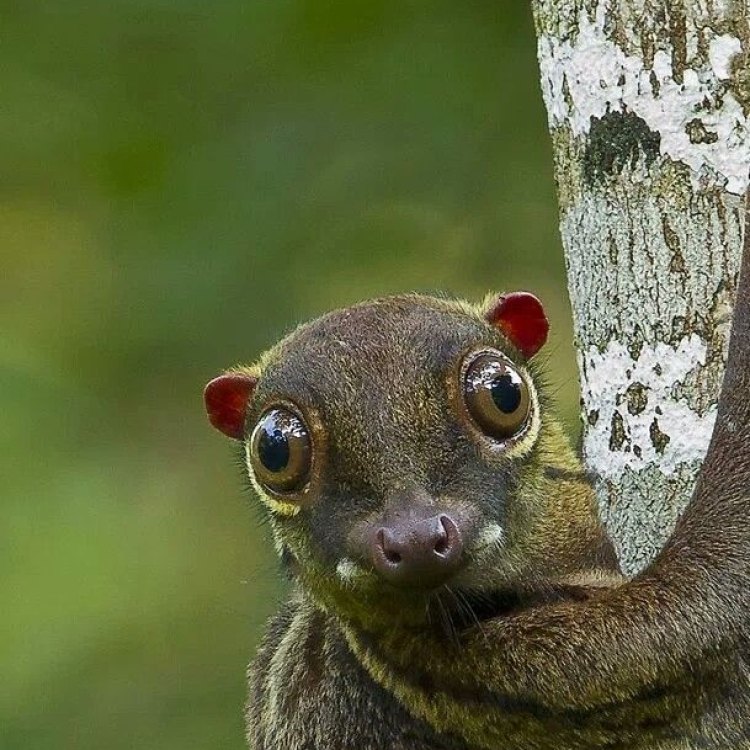
The Fascinating Flying Lemur: A True Miracle of Nature
Disclaimer: The content provided is for informational purposes only. We cannot guarantee the accuracy of the information on this page 100%. All information provided here may change without prior notice.

